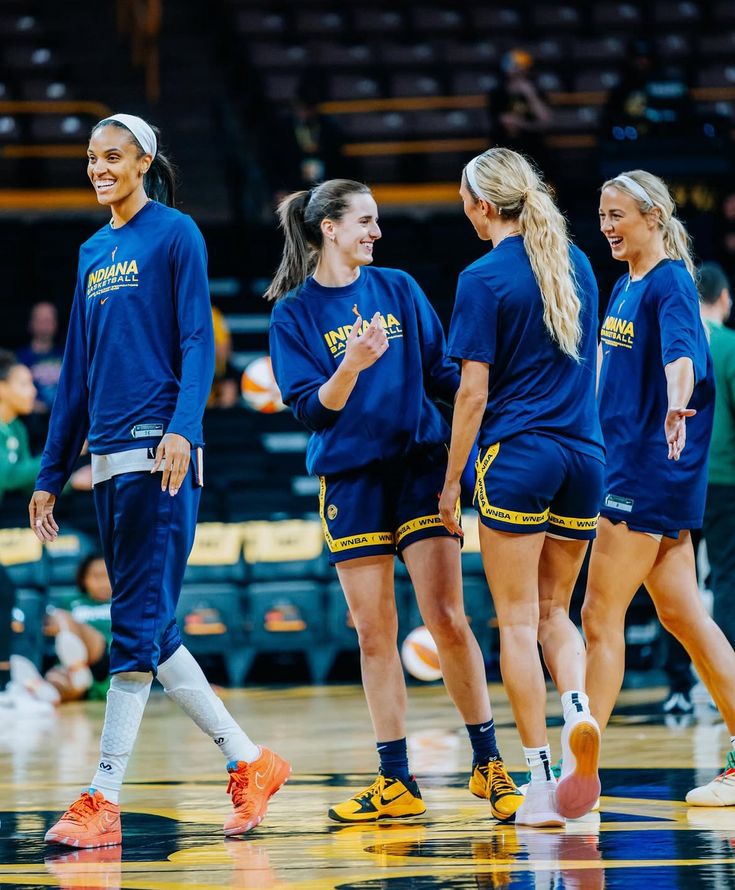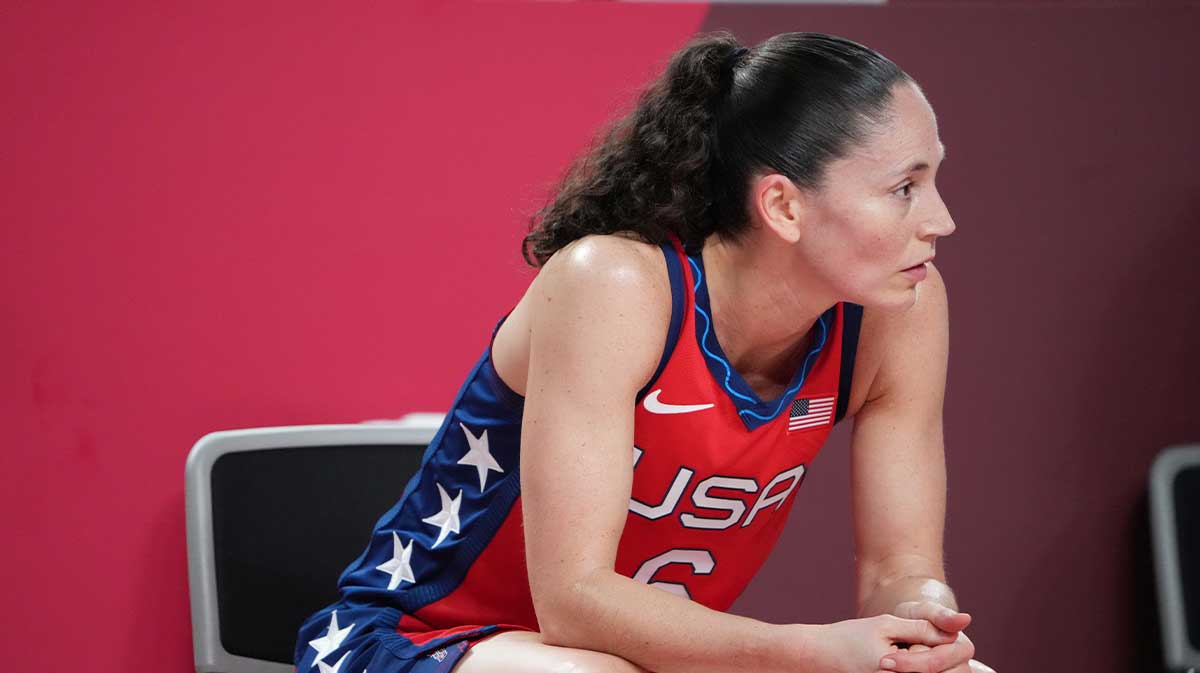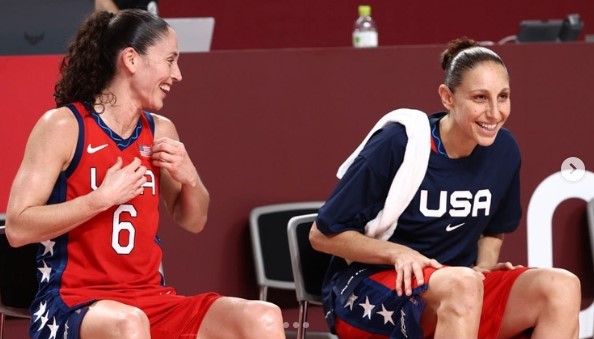Sue Bird’s Five-Word Reality Check on Caitlin Clark’s Assist Record Chase
WNBA legend Sue Bird recently delivered a blunt assessment of Caitlin Clark’s chances of breaking her all-time assist record, summing up her perspective in just five words that reveal the mathematical reality of the situation. “These records have no chance,” Bird stated on the latest episode of No Offseason: The Athletic Women’s Basketball Show, emphasizing the logistical challenges that make such record-breaking attempts nearly impossible within a reasonable timeframe.

The Indiana Fever’s rising star Caitlin Clark currently finds herself sidelined with a quad injury, but upon her return, she will continue pursuing what many consider an almost insurmountable goal set by Bird during her legendary career. Clark is actively seeking to eclipse Bird’s remarkable record of 3,234 career assists, a milestone that represents decades of elite playmaking at the highest level of women’s professional basketball.
Bird’s skepticism stems from fundamental differences in how the modern WNBA operates compared to her era, particularly regarding the number of games played per season and career longevity expectations. “I think I played like 34 games majority of my career… They’re on the clock. They better break those things in like five years,” Bird explained, highlighting the compressed timeline that today’s players face when attempting to reach such lofty statistical achievements.

Despite her realistic assessment of the record-breaking prospects, Bird has consistently praised Clark’s exceptional abilities as a playmaker and acknowledged the unique qualities that set her apart from other point guards in the league. Bird emphasized that Clark possesses the fundamental requirement for elite playmaking: incredible court vision that allows her to anticipate defensive movements and create opportunities for teammates in ways that separate her from ordinary players.
Beyond her court vision, Bird identified a crucial physical attribute that distinguishes Clark from many other talented passers in the WNBA and elevates her playmaking to an elite level. “What I would add to that and what I think separates her right on top of again all the qualities that most great passers have is she has strength,” Bird explained, noting that Clark’s physical capabilities enable her to execute passes that others might see but cannot physically deliver.
Bird further elaborated on this point, explaining that Clark’s success often comes not just from reading the defense or having exceptional vision, but from her ability to physically deliver the ball where it needs to go. “Sometimes she’s able to make passes not because she sees it, not because she’s reading the defense, yes, those things exist, but that’s not why she’s able to make the pass,” Bird noted, emphasizing that Clark’s strength allows her to complete passes that would be impossible for players with less physical capability.

The comparison between Bird’s career trajectory and Clark’s current path reveals striking similarities that extend far beyond their shared excellence in facilitating offense for their respective teams. Bird entered the WNBA in 2002 as a highly touted rookie from the University of Connecticut, carrying enormous expectations and immediately becoming a focal point for the league’s growth and development during its formative years.
Much like Bird’s transformative impact on the WNBA during her era, Clark arrived from the University of Iowa with an unprecedented profile, having broken the all-time NCAA scoring record and generating massive public interest in women’s college basketball. Clark’s rookie season performance validated much of the pre-professional hype, as she established herself as both the face of the Indiana Fever franchise and a central figure in the league’s continued expansion and popularity.
Clark’s impressive statistical achievements during her debut season demonstrate her immediate impact and suggest a promising foundation for future record-chasing endeavors, even if Bird’s ultimate assist record remains mathematically challenging. Last year, Clark broke the record for most assists in a single season by a rookie with 322, surpassing previous benchmarks and establishing herself as an elite playmaker from her very first professional campaign.
Additionally, Clark holds the current record for most assists in a single game with 19, a remarkable achievement that showcases her ability to completely dominate the playmaking aspect of basketball when conditions align perfectly. Including her four games played in 2025, Clark has totaled 374 assists in her young career, tying her with Atlanta Dream guard Rhyne Howard for 169th all-time, indicating the massive gap that still exists between her current position and Bird’s legendary mark.

The current landscape of WNBA assist leaders reveals the scope of Clark’s challenge, with Chicago Sky guard Courtney Vandersloot holding the second-highest total with 2,887 career assists but unfortunately sidelined for the season due to a torn ACL injury. This injury creates an opportunity for Clark to potentially climb the rankings more quickly, though the gap between active players and Bird’s record remains substantial and daunting.
Bird’s championship legacy adds another layer to the comparison, as she led the Seattle Storm to four WNBA championships throughout her career and established herself as one of the greatest point guards in basketball history across any level. Clark’s journey toward similar team success remains in its early stages, with the Indiana Fever organization building around her talents and hoping to construct a championship-caliber roster that can compete at the highest level.

The mathematical reality of Bird’s record-breaking assessment reflects broader changes in professional sports, where modern athletes often face different challenges and opportunities compared to previous generations of players. Bird’s career spanned an era when WNBA seasons were shorter and player longevity was measured differently, creating statistical benchmarks that may prove nearly impossible to reach under current league structures and career expectations.
Clark’s pursuit of Bird’s assist record represents more than just individual achievement; it symbolizes the continuing evolution of women’s basketball and the rising standards of excellence that each generation brings to the sport. While Bird’s five-word assessment suggests skepticism about the mathematical feasibility of breaking her record, it also acknowledges the exceptional talent required even to be mentioned in such conversations.

The ongoing dialogue between current and former WNBA stars highlights the respect and recognition that transcends generational boundaries, with legends like Bird serving as both benchmarks for achievement and mentors for rising stars. Bird’s honest assessment of Clark’s record-chasing prospects reflects the realistic perspective of someone who understands both the demands of professional basketball and the statistical requirements necessary to reach historical milestones.
As Clark continues her recovery from injury and prepares for her return to action, her pursuit of Bird’s assist record will serve as a compelling narrative throughout her career, regardless of whether the mathematical realities allow for actual record-breaking achievement. The journey itself, marked by exceptional playmaking and continued development, represents the type of excellence that defines championship-caliber point guards and ensures Clark’s place among the elite players in WNBA history.